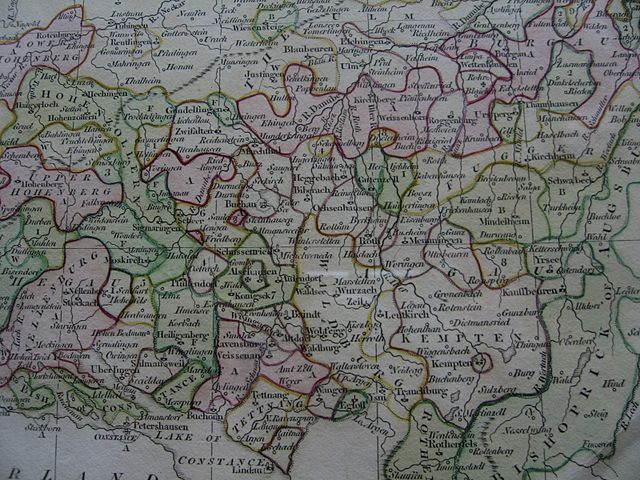Princely abbeys and imperial abbeys of the Holy Roman Empire
Princely abbeys and Imperial abbeys were religious establishments within the Holy Roman Empire which enjoyed the status of imperial immediacy (Reichsunmittelbarkeit) and therefore were answerable directly to the Emperor. The possession of imperial immediacy came with a unique form of territorial authority known as Landeshoheit, which carried with it nearly all the attributes of sovereignty.
Anselm Rittler, last Imperial abbot of Weingarten (1784–1804). Starting in 1555, the abbots of Weingarten cast the collective vote of the Imperial abbots of Swabia at the Imperial Diet
Imperial abbeys in Swabia
Weissenau abbey, circa 1625
An 18th-century prince-abbot: Anselm Reichlin von Meldegg of Kempten
Imperial immediacy was a privileged constitutional and political status rooted in German feudal law under which the Imperial estates of the Holy Roman Empire such as Imperial cities, prince-bishoprics and secular principalities, and individuals such as the Imperial knights, were declared free from the authority of any local lord and placed under the direct authority of the Holy Roman Emperor, and later of the institutions of the Empire such as the Diet, the Imperial Chamber of Justice and the Aulic Council.
The Prince-Bishop of Liège, member of the Imperial estates, enjoyed Imperial immediacy and therefore could negotiate and sign international treaties on his own, as long as they were not directed against the Emperor and the Empire.





